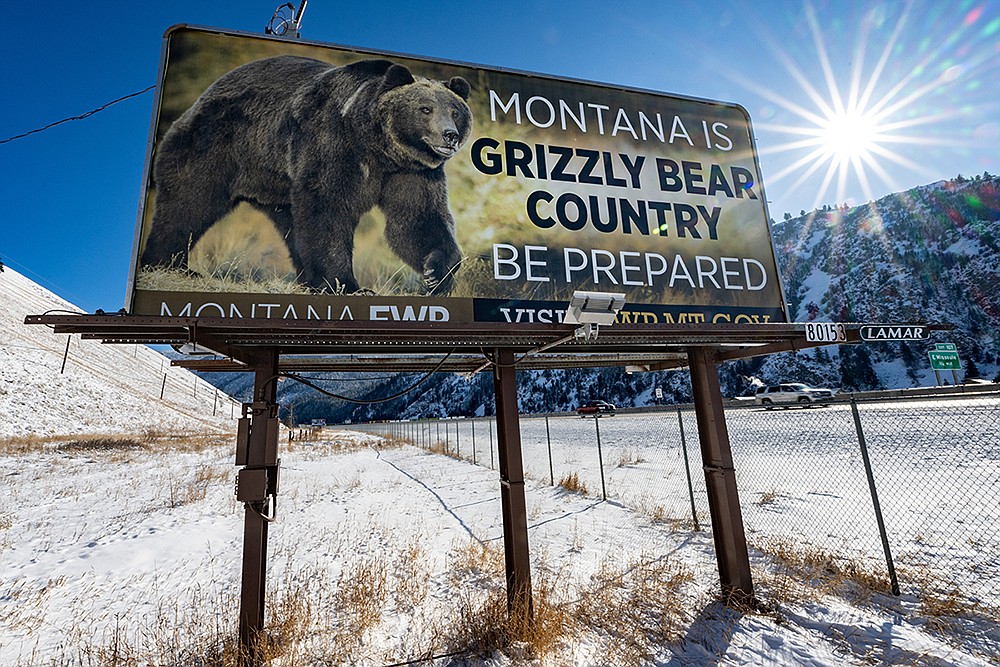Let science guide decisions on bear management
As a Montanan and resident of Flathead County, I have a big stake in what happens to grizzly bears including inside Montana. So far, it doesn’t look hopeful for bears or for the Rocky Mountain West.
The protected status of grizzly bears in the northern Rocky Mountains in the Lower 48 states is in grave danger, because U.S. Fish and Wildlife Service is exploring whether grizzly bears in the Greater Yellowstone and Northern Continental Divide ecosystems are “sufficiently recovered” to no longer be considered as a “threatened” species.
The U.S. has legal responsibilities through the landmark Endangered Species Act, which celebrates 50 years this month. This obligation to protect and recover grizzly bears for generations should not be taken lightly or politicized by any state governors or politicians who may disregard the science when they publicly advocate for de-listing of species, subspecies, or populations.
A document, available on montana.gov (The Status of the Grizzly Bear and Conservation of Biological Diversity in the North Rocky Mountains) conveys a compendium of statements from leading grizzly bear and conservation scientists representing an impressive and cumulative body of knowledge and experience of more than 200 years. These scientists emphatically attest that delisting grizzly bears in the Northern Rockies is unwarranted and at odds with the recovery goals of the ESA.
According to the agency’s last five-year review, there are about 1,100 grizzlies living in the Greater Yellowstone Ecosystem and about 740 in the Northern Continental Divide ecosystem.
The conservation scientists in the report have studied grizzly bears in the two regions under investigation and conclude that our current understanding of the genetic diversity and the demographic security needed for grizzlies to persist for several hundred years, suggests that up to 5,000 grizzly bears may be necessary.
They also provide a comprehensive review of the history of grizzly bear declines and the threats to their continued existence. In their words, a blueprint for meaningful recovery under the existing legal framework to support a viable population over a long-time frame (say 500-1,000 years).
I implore Daily Inter Lake readers and anyone who cares about grizzly bears to read this document carefully, because it directly pertains to this inquiry by U.S. Fish and Wildlife Service, the agency that must consider the conservation genetics, population viability, habitat dynamics and security, food habits, bear-human interactions, and total spatial requirements in a meta-population context before it rules on its crucial actions to protect or not protect the survival and biological recovery of the grizzly bear.
U.S. Fish and Wildlife Service must also consider existing and increasing threats to grizzly bears in the Northern Continental Divide ecosystem and Greater Yellowstone before changing its status, including increasing human populations and growth in bear habitat, increased conflicts with agriculture, more extreme and frequent wildfires, more backcountry roads being built from extraction of timber, more recreationalists and loss of food sources including fruit, the main staple of bears due to climate.
The authors point out, this is just the latest time that individual range states, including Montana and Wyoming, have asked for grizzly bears to be delisted and for purposes that are not in the interest or in line with sound conservation and population ecology.
It is reasonable to keep in mind that “Grizzly bear management in the Rocky Mountains has long been an exercise in political appeasement of economic interests. The best available scientific information is ignored or cited out of context to suit management prerogatives. Agency scientists and decision-makers are now shackled by an unprecedented exploitative agenda.”
U.S. Fish and Wildlife Service must divorce its decisions from politics aimed at interests other than protecting grizzly bears.
I would add that the best available science today on apex predators including grizzly bears clearly shows that their health and well-being is tied to the fate of hundreds of other species within these ecosystems. Climate and other anthropogenic effects are threatening species diversity, and our federal agency must take the long-term view of emerging threats that will put wide-ranging apex predators at risk. The agency must judge grizzly bear viability of populations in terms of many factors, with functional connectivity among currently isolated populations of bears as a necessary precondition for recovery.
But don’t take it from me, hear the scientists who are on the front lines. Let the science guide the way and protect grizzly bears in a way that means something to the generations who come after us.
Carolyn Hall is Montana state director of Animal Wellness Action.


